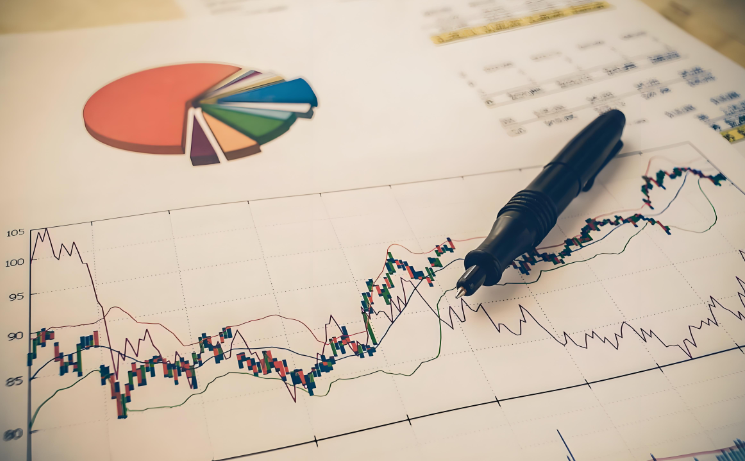
In the complex world of securities trading, understanding the units of measurement is crucial for making informed decisions. One such unit that traders frequently encounter is the “Standard Hand.” Whether you’re dealing with stocks, futures, or other financial products, the Standard Hand serves as a benchmark for trading volume. This article delves deep into what a Standard Hand is, how it’s used across different markets, and why it’s important for traders to grasp this concept.
What is a Standard Hand?
A Standard Hand is a unit used in securities trading to represent the trading volume of a specific financial product. It is a standardized measure that varies depending on the market or exchange in question. The Standard Hand simplifies the trading process by providing a consistent unit for transactions, making it easier for traders to calculate, manage, and execute trades.
The Role of Standard Hand in Stock Trading
In stock trading, the Standard Hand typically refers to a block of 100 shares. This means that when stocks are traded in Standard Hands, each transaction is conducted in multiples of 100 shares. For instance, if a trader buys 10 Standard Hands of a particular stock, they are purchasing 1,000 shares in total. This standardization streamlines trading, allowing for clearer communication and smoother transactions between buyers and sellers.
Examples of Standard Hand Transactions in Stock Markets
Consider a scenario where an investor wishes to purchase shares of a company. If the stock is priced at $50 per share, purchasing one Standard Hand would cost $5,000 (100 shares x $50). If the investor decides to buy 5 Standard Hands, the total investment would be $25,000. The use of Standard Hands makes it easy to calculate the total transaction value and manage portfolio sizes.
Standard Hand in Futures Trading
The concept of a Standard Hand also applies to futures trading, though the specifics can vary based on the contract involved. In futures, the Standard Hand is determined by the contract specifications set by the exchange or regulatory body.
Standard Hand Examples in Different Futures Markets
For example, in crude oil futures, one Standard Hand might represent 1,000 barrels of oil. In gold futures, a Standard Hand could equate to 100 ounces of gold. The exact quantity is predefined, allowing traders to know precisely what they are trading. This standardization is vital in futures trading because it ensures that all parties involved are on the same page regarding the quantity and terms of the contract.

Mini and Micro Lots: Alternatives to Standard Hand
In addition to Standard Hands, traders, especially in the forex market, may encounter terms like Mini Lots and Micro Lots. These are smaller units of trading volume designed to accommodate different levels of risk tolerance and investment size.
Differences Between Standard Hand, Mini Lot, and Micro Lot
- Standard Hand: Represents 100,000 units of currency in forex trading.
- Mini Lot: Equivalent to one-tenth of a Standard Hand, or 10,000 units of currency.
- Micro Lot: Represents one-hundredth of a Standard Hand, or 1,000 units of currency.
These smaller lot sizes are particularly useful for beginners or those with limited capital, allowing them to trade in smaller quantities and manage risk more effectively.

Impact of Leverage on Standard Hand
Leverage plays a significant role in trading, especially when dealing with Standard Hands. Leverage allows traders to control a larger position with a smaller amount of capital, effectively amplifying both potential gains and losses.
How Leverage Affects Trading with Standard Hand
For instance, in forex trading, if a trader uses 100:1 leverage, they can control one Standard Hand (100,000 units) with just 1% of the total value as margin. This means that to trade a Standard Hand worth $100,000, the trader only needs $1,000 in their account. However, while leverage can increase profits, it also magnifies losses, making risk management crucial.
Standard Hand and Transaction Costs
Trading costs are an essential factor to consider when dealing with Standard Hands. In many trading platforms, costs are incurred through spreads—the difference between the buying and selling price of a security. The larger the Standard Hand, the higher the potential transaction costs, including spreads, commissions, and other fees.
Understanding Transaction Costs Associated with Standard Hands
For example, if a forex trader is dealing with a Standard Hand, even a small spread can lead to significant costs due to the large volume of the trade. Therefore, it’s vital for traders to factor in these costs when planning their trades to ensure that their strategy remains profitable.
The Relationship Between Standard Hand and Margin Requirements
Margin is the amount of money a trader needs to open a position, and it is closely related to the concept of a Standard Hand. The margin requirement depends on the leverage used and the size of the Standard Hand being traded.
Calculating Margin Requirements for Standard Hand Trades
If a trading platform requires a 2% margin for a Standard Hand, this means that for a $100,000 trade, the trader must have $2,000 in their account. The relationship between margin and Standard Hand is critical because it determines the level of capital required to maintain a position in the market.
Is Standard Hand Suitable for All Traders?
While the Standard Hand is a common unit of trading, it may not be suitable for everyone. For smaller traders or those new to the market, the large volume associated with Standard Hands can represent significant risk.
Who Should Use Standard Hands in Their Trading Strategy?
Experienced traders with sufficient capital and a robust risk management strategy are typically the ones who use Standard Hands effectively. For beginners, starting with Mini or Micro Lots might be more appropriate, allowing them to gain experience and confidence before moving on to larger trades.
Key Considerations When Trading with Standard Hand
When engaging in trading with Standard Hands, there are several factors traders should consider to optimize their strategy and manage risk.
Risk Management Strategies
Implementing proper risk management techniques, such as setting stop-loss orders and not over-leveraging, is crucial when trading in Standard Hands due to the large volume involved.
Market Conditions and Timing
Understanding market conditions and choosing the right time to enter and exit trades can significantly impact the success of trades conducted in Standard Hands.
Choosing the Right Broker
Selecting a broker with favorable spreads, low commissions, and transparent margin requirements can also make a substantial difference in the profitability of trading with Standard Hands.

FAQs
What is the difference between a Standard Hand and a Mini Lot?
A Standard Hand represents a larger trading volume (e.g., 100,000 units in forex), while a Mini Lot is one-tenth of a Standard Hand, allowing for smaller trades.
Can beginners trade using Standard Hands?
Beginners can trade using Standard Hands, but it is generally recommended to start with Mini or Micro Lots to manage risk more effectively.
How does leverage affect Standard Hand trading?
Leverage allows traders to control a large Standard Hand with a smaller amount of capital, but it also increases the potential for significant losses.
What are the costs associated with trading Standard Hands?
Costs include spreads, commissions, and possibly other fees, which can be significant due to the large trading volume of a Standard Hand.
Is a Standard Hand the same across all markets?
No, the definition of a Standard Hand can vary depending on the financial product and the market or exchange in question.
Why is understanding the Standard Hand important for traders?
Understanding the Standard Hand is crucial for accurate calculation of trade volumes, effective risk management, and making informed trading decisions.
The Standard Hand is a fundamental concept in securities trading, providing a standardized unit for measuring and executing trades. While it offers numerous advantages in terms of simplicity and standardization, it also requires a solid understanding of leverage, transaction costs, and margin requirements. Whether you’re a seasoned trader or a beginner, mastering the intricacies of the Standard Hand can significantly enhance your trading strategy and contribute to more informed and profitable trading decisions.








